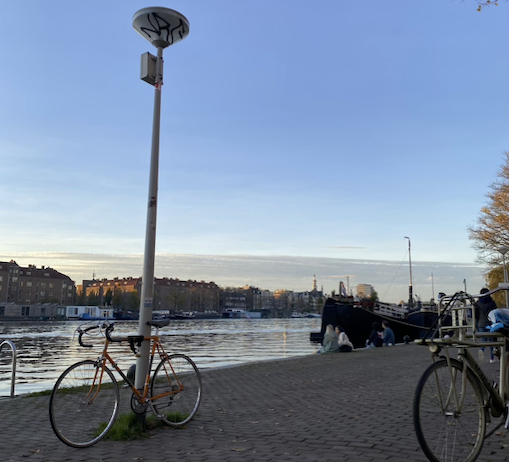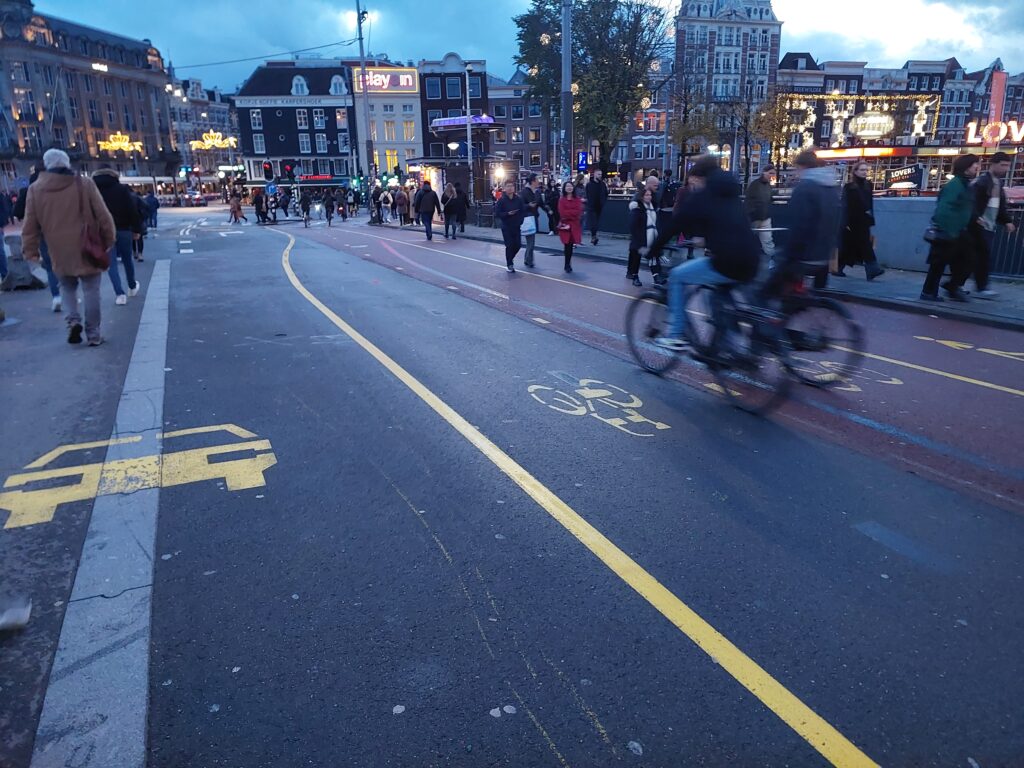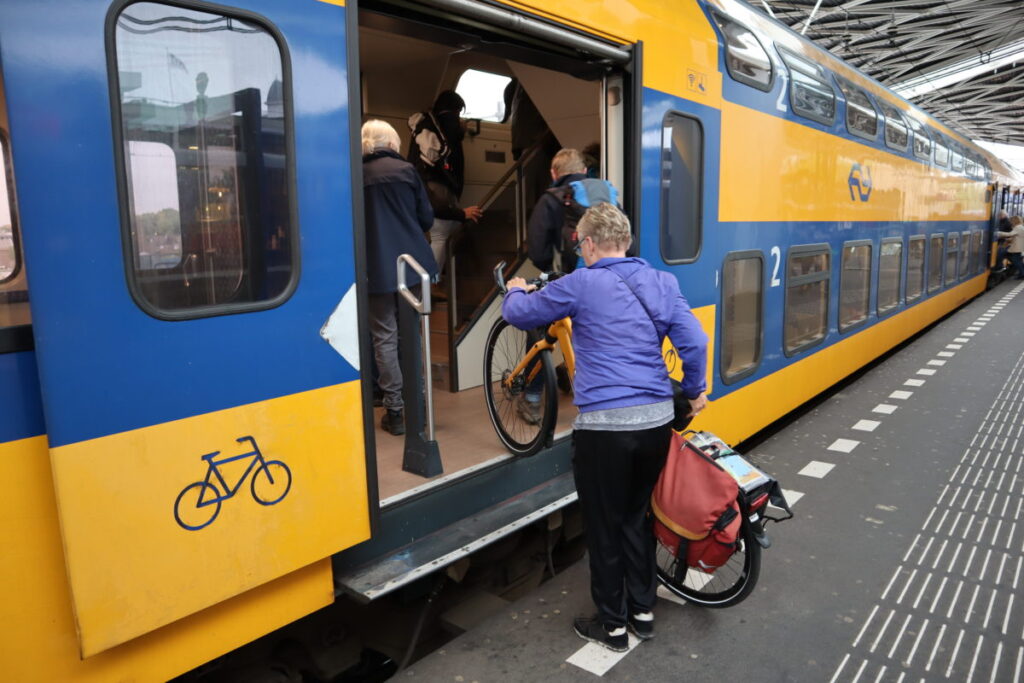Explaining parents’ representations of children’s mobilities
Written by Jonne Silonsaari & Marco te Brömmelstroet
Intensive parenting has become a key term for analysing the pressures and priorities of contemporary western parenting culture. In our recently published study, we sought to explain how it shapes children’s mobilities. With a change-oriented research design and innovative mobility experiments, our study provides new insights on why parents’ representations of children’s mobility affect their status as autonomous cyclists.
A peek under the hood of car-parenting
Intensive parenting refers to a range of phenomena in contemporary societies where childrearing practices become subject to intense public scrutiny. As put by Frank Furedi in his book Paranoid parenting: ‘[t]raditionally, good parenting has been associated with nurturing, stimulating and socialising children. Today it is associated with monitoring their activities.’ Parents are expected to align all their actions into a coherent parenting strategy which optimises the well-being and success of future generations.
The contemporary western parenting discourse especially appreciates children’s organised leisure activities that are posited to enrich children with a range of future assets and dispositions. Children’s out-of-school life has dramatically shifted from free play and mobility towards various adult-led organised activities. In parallel, car chauffeuring has increased, and studies suggest that children’s journeys to organised activities are even more car-dependent than other journeys.
These intersecting phenomena provide one explanation why the car has become such an integral part of the socio-spatial organisation and narrative of ‘good parenting’. But, if contemporary parenting culture is actively undermining children’s freedom of mobility, how can things change?
How the study unfolded
Our action research study engaged with a local children’s sports club community in Finland to provide a nuanced understanding of these relationships. The results confirmed the prevalence of intensive parenting culture, but, importantly, also showed that communities can also renegotiate their shared understanding of ‘good’ mobility, parenting and childhood.
In the beginning of the study, our critical discourse analysis revealed that parents constructed car-parenting as a manifestation of intensive parenting culture. However, after a few months of mobility experiments there was an important change in children’s mobility patterns away from car-chauffeuring towards autonomous cycling (1). In the end of the study, the same community of parents constructed a contrasting mobility representation that recognises and emphasises the myriad positive aspects of children’s collective, autonomous cycling culture, here labelled as childhood velonomy.
Assembling childhood velonomy
The term velonomy has been used by authors and activists interested in how people’s engagement with the bicycle through various practices of using, moving and repairing can foster a comprehensive community culture of cycling. By conceptualising cycling as a cultural event (rather than a purely logistical ‘transport issue’), these studies have shown how people’s abilities to manage the bicycle and negotiate urban space with it can promote a sense of autonomy, agency and empowerment especially for underprivileged groups. Importantly, this process entails systematically reflecting and criticising the hierarchies of the car-system and renegotiating what kinds of mobilities and activities are desirable and possible for given subjectivities (for example children).
Crucially, velonomy is not about developing autonomous bicycle citizens at the individual level, but about a collective and social process. In our study,
‘children becoming mobile’ was considered an open-ended process that cannot be contained to formal learning environments, but encompassed by free-flowing engagements with people, objects and spaces. In other words, it is something that local adult-child communities need to learn through experimenting and reflecting new mobility realities.
Representations of mobility are not mere constructions – they are performative. The table illustrates how, in our study, the different representations of children’s mobility were enacted in roles and relationships among children and parents.
| Car-parenting | Child velonomy |
| Parents’ duty to invest in children through chauffeuring | Parents’ duty to support children’s autonomy through enabling mobility |
| Parents defining the appropriate socio-spatial organisation of children’s lives | Parents and children mutually defining the appropriate socio-spatial organisation of children’s lives |
| Parents’ role to ‘pave the way’ for children (with automobility) | Parents’ role to let children experience (through autonomous mobility) |
| Parents responsibility to provide children with meaningful social relationships through organised activities | Children’s ability to create meaningful social relationships for themselves |
| Car as an exclusive care space for parenting – chauffeuring as ‘doing family’ | Cycling as an exclusive social space for children’s peer relations – cycling as ‘doing friendships’ |
| Parents managing the social-material space of the family car | Children supported to manage the social-material spaces created through bicycles and cycling equipment |
| Car as an exclusive care space for parenting – chauffeuring as ‘doing family’ | Cycling as an exclusive social space for children’s peer relations – cycling as ‘doing friendships’ |
| Parents managing the social-material space of the family car | Children supported to manage the social-material spaces created through bicycles and cycling equipment |
So what? – implications for cycling promotion
Children’s lower independent mobility has been found to predict greater feelings of loneliness, weaker sense of community, a lower sense of safety and less frequent social activities with friends. On the other hand, studies have discussed how companionship pervades children’s autonomous mobility and how children ‘do friendships’ by walking and cycling together. In other words, autonomy and independence in and through mobility is crucial for the next generation’s wellbeing. Based on our findings we argue that parents are not blind to this, but find it difficult to challenge prevalent car-centric parenting cultures. Thus, cycling projects should not responsibilise parents and children to challenge prevailing car-centric parenting cultures individually, but seek to facilitate collective social learning.
Even though children’s mobilities are powerfully shaped by parent’s risk-awareness in contemporary cities, they are also shaped by notions of care, cultivation and enrichment – about good life for children and adults. These positive representations of mobility must be appropriated in parenting communities and discourses to promote collective change. However, positive representations and rationalities as childhood velonomy do not demand changing the profound beliefs, values and aspirations of contemporary parenting. Rather the benefits of the freedom of movement simply need to be appropriated in the locally emerging set of valuations, beliefs and ideals about ‘good’ parenting, mobility and childhood.
1) For more insights on the mobility experiments, see Silonsaari, J. E. (2024). Prefigurative politics in action research for just cycling futures. Urban, Planning and Transport Research, 12(1), 2318436.
Full paper is available open access :
Silonsaari, J., Simula, M., & te Brömmelstroet, M. (2024). From intensive car-parenting to enabling childhood velonomy? Explaining parents’ representations of children’s leisure mobilities. Mobilities, 19(1), 116-133



